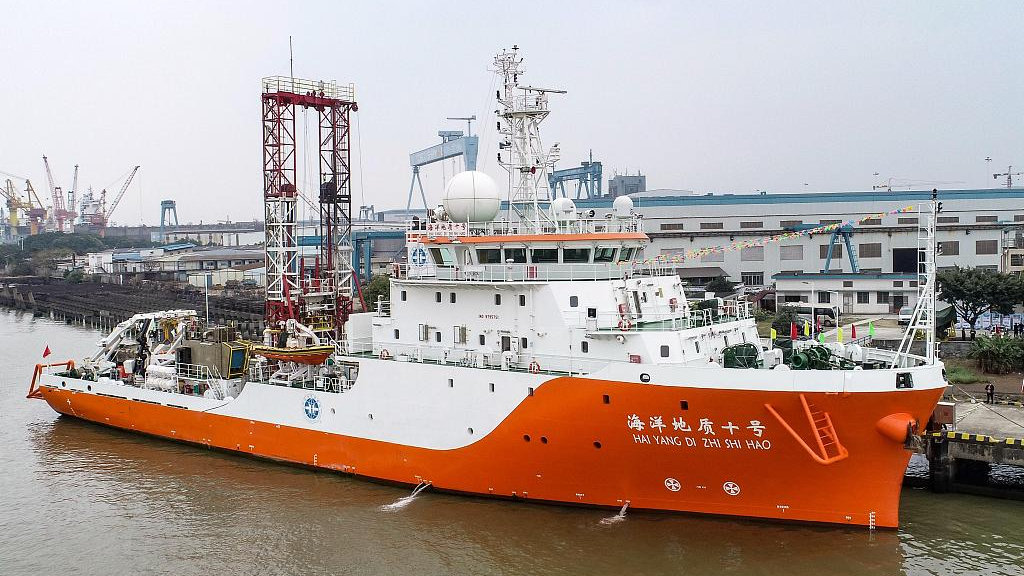Unveiling the Depths: China’s Trailblazing Exploration Beneath the South China Sea
In a monumental step forward in the realm of geoscience, Chinese researchers recently declared they had, for the very first time, plunged 302.07 meters below the seafloor during a meticulously planned drilling and coring expedition in the northern shelf of the South China Sea. This milestone, a testimony to the ceaseless spirit of exploration, came after wrapping up the recent journey on board the “Haiyang Dizhi-10,” commonly referred to as “Ocean Geology 10.” Notably, this marine geological survey vessel is a product of domestic engineering, showcasing the pinnacle of Chinese marine technology.
Delving into the Details
On Friday, following the conclusion of their expedition, the scientists were brimming with pride and excitement as they brought this groundbreaking news to the limelight. For those in the geoscientific community and outside of it, the depth reached is not just a number. It symbolizes the determination to push boundaries and the aspiration to understand our planet more intimately.
Zhang Jinpeng, a distinguished senior engineer affiliated with the Guangzhou Marine Geological Survey (GMGS), communicated this historic achievement to the China Media Group (CMG). He pointed out that the depth set an unparalleled record for Quaternary System core drillings in the Chinese shelf regions.
For those less familiar with the field, offshore drilling might seem like just another industrial procedure. However, it’s pivotal to clarify the significant difference. Offshore drilling in the realm of geoscience is not about extracting resources but about delving deep into the Earth’s mysteries. It’s the most straightforward and tangible method to peek into the planet’s innards. Through this technique, geoscientists can gather sediment and rock samples from profound depths, providing invaluable insights into Earth’s history and structure.
The Significance of the Location
The site chosen for this monumental drilling was strategically positioned 175 kilometers from the Pearl River Estuary, which lies in southern China’s Guangdong Province. The water at this particular location has a depth of 92 meters, as detailed by Zhang. This spot wasn’t picked at random. The intricacies and significance of the selected drilling site offer a plethora of information about the region’s geological past and potentially about global climatic phenomena.
The samples procured from this mission are not mere rocks and sediments. They are pages from the Earth’s vast diary, containing stories spanning millions of years. These geological narratives will provide scientists with a clearer picture of the area’s carbon burial history. They shed light on the evolutionary timeline of the paleo-Pearl River Delta. Furthermore, they might hold clues about the intricate relationship between local sea levels and overarching global climate shifts.
Advanced Technology at Play
One can’t discuss this groundbreaking expedition without shining a light on the innovative tools and techniques that made it possible. Wang Shidong, another esteemed engineer from GMGS, elaborated on the technology that was instrumental in the mission’s success in his conversation with CMG.
At the forefront was China’s indigenously developed equipment. Among these was a hydraulic piston corer, a cutting-edge tool designed to extract long, undisturbed samples from the seabed. Such tools are indispensable for ensuring the pristine condition of the samples, which, in turn, guarantees accurate analyses and results.
Moreover, the expedition embraced novel marine deep-hole drilling techniques. When attempting to pierce the depths of the ocean floor, traditional methods might fall short. Thus, the integration of these innovative strategies was crucial. They not only facilitated the drilling process but also ensured the samples’ high quality, which is paramount for the researchers.
In Conclusion
The recently completed expedition in the northern shelf of the South China Sea is not just a routine mission. It’s a testament to the prowess of human endeavor and the insatiable thirst for knowledge. As Chinese geoscientists push the envelope, they pave the way for more discoveries and a better understanding of our blue planet. Their efforts, backed by innovative technology and strategic planning, underscore the importance of exploration, research, and the unyielding spirit of discovery.
Read More:
